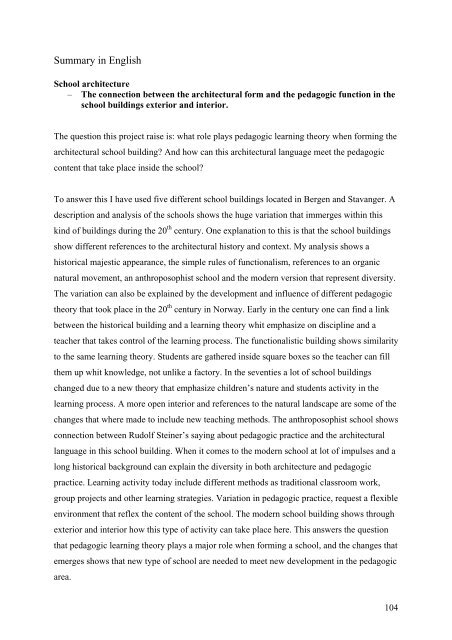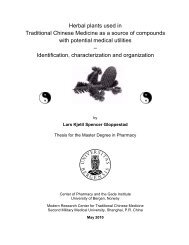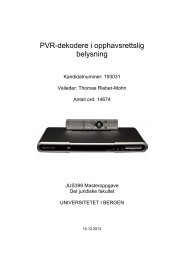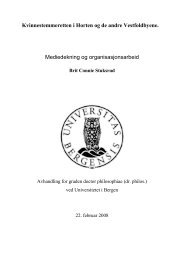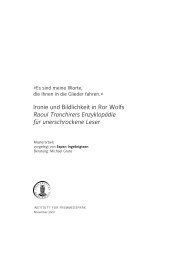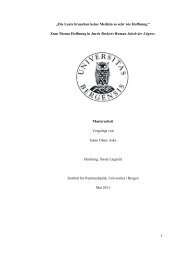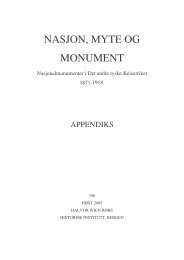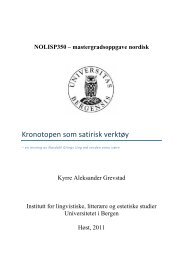View/Open - BORA - Universitetet i Bergen
View/Open - BORA - Universitetet i Bergen
View/Open - BORA - Universitetet i Bergen
You also want an ePaper? Increase the reach of your titles
YUMPU automatically turns print PDFs into web optimized ePapers that Google loves.
Summary in English<br />
School architecture<br />
– The connection between the architectural form and the pedagogic function in the<br />
school buildings exterior and interior.<br />
The question this project raise is: what role plays pedagogic learning theory when forming the<br />
architectural school building? And how can this architectural language meet the pedagogic<br />
content that take place inside the school?<br />
To answer this I have used five different school buildings located in <strong>Bergen</strong> and Stavanger. A<br />
description and analysis of the schools shows the huge variation that immerges within this<br />
kind of buildings during the 20 th century. One explanation to this is that the school buildings<br />
show different references to the architectural history and context. My analysis shows a<br />
historical majestic appearance, the simple rules of functionalism, references to an organic<br />
natural movement, an anthroposophist school and the modern version that represent diversity.<br />
The variation can also be explained by the development and influence of different pedagogic<br />
theory that took place in the 20 th century in Norway. Early in the century one can find a link<br />
between the historical building and a learning theory whit emphasize on discipline and a<br />
teacher that takes control of the learning process. The functionalistic building shows similarity<br />
to the same learning theory. Students are gathered inside square boxes so the teacher can fill<br />
them up whit knowledge, not unlike a factory. In the seventies a lot of school buildings<br />
changed due to a new theory that emphasize children’s nature and students activity in the<br />
learning process. A more open interior and references to the natural landscape are some of the<br />
changes that where made to include new teaching methods. The anthroposophist school shows<br />
connection between Rudolf Steiner’s saying about pedagogic practice and the architectural<br />
language in this school building. When it comes to the modern school at lot of impulses and a<br />
long historical background can explain the diversity in both architecture and pedagogic<br />
practice. Learning activity today include different methods as traditional classroom work,<br />
group projects and other learning strategies. Variation in pedagogic practice, request a flexible<br />
environment that reflex the content of the school. The modern school building shows through<br />
exterior and interior how this type of activity can take place here. This answers the question<br />
that pedagogic learning theory plays a major role when forming a school, and the changes that<br />
emerges shows that new type of school are needed to meet new development in the pedagogic<br />
area.<br />
104


